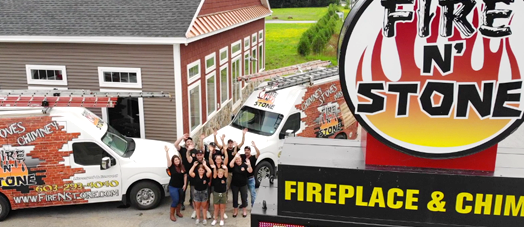What Causes Chimney Leaks?
Chimney leaks are more common than you think. And while some regard them as minor annoyances, they’re quite dangerous and can lead to costly repairs or fires. Here are the main causes of chimney leaks and things you can do to prevent them.

Causes of Chimney Leaks
Cracked Chimney Crown
The chimney crown is the topmost part of the chimney, and its job is to prevent water from entering the flue. Over time, exposure to harsh weather conditions, like ice and snow, can cause the crown to crack. These cracks allow water to seep into the crown, leading to leaks and potentially damaging the chimney’s structure.
Damaged or Missing Flashing
Flashing is the metal material that seals the gap between the chimney and the roof. Water can easily penetrate this vulnerable area if the flashing is improperly installed, damaged, or missing. This can result in leaks in the chimney and the surrounding roof area, causing water damage in the house.
Deteriorated Mortar Joints
Mortar joints hold the chimney’s bricks together. Over time, these joints can deteriorate due to weather and the freeze-thaw cycle. When the mortar erodes, it creates gaps and cracks that allow water to infiltrate the chimney’s structure, causing leaks and compromising the chimney’s stability.
Faulty Chimney Cap
The chimney cap is a protective cover placed over the opening to keep out rain, snow, debris, and animals. If the cap is missing, damaged, or improperly installed, water can easily enter the flue and cause leaks.
Condensation Issues
Condensation can form inside the chimney flue, especially in homes with gas fireplaces. This is often caused by having an improper liner or an unlined chimney. The condensation can eventually seep into the chimney’s walls, causing leaks and water damage.
Water Absorption
Brick and mortar are porous materials that absorb water during heavy rains and snow. Over time, the absorbed water, combined with a freeze-thaw cycle, causes cracks. The worse the cracks get, the more water gets in. If left alone, this can lead to brick spalling.

How to Prevent Chimney Leaks
Regular Inspection and Maintenance
The best way to guard against chimney leaks and other damage is to schedule an annual inspection by a certified professional. They can identify issues like cracks, gaps, and other signs of wear that could lead to leaks.
Repair Cracks and Deteriorated Mortar
If, during an inspection, it’s found there are cracks or other damage, it’s crucial to repair them as soon as possible. Remember, the longer you wait, the worse the damage will get and the more expensive it will be to fix.
Seal the Chimney Crown
Apply a waterproof sealant to the chimney crown to protect it from wet weather damage. This will help prevent cracks and water infiltration.
Waterproof the Chimney
Apply a high-quality, breathable waterproofing product to your chimney’s exterior. This will help prevent water absorption while allowing any moisture trapped inside to escape. Waterproofing can significantly extend your chimney’s lifespan.
Install or Replace the Cap
Chimney caps are crucial for preventing water, debris, and animals from getting into the flue. They are relatively inexpensive, and the protection they provide is invaluable.
Replaced Damage Flashing
Inspect the flashing around your chimney and roofline. If it’s damaged or missing, have a professional roofer replace it. Properly installed flashing prevents water from seeping into the chimney and roof structure.
Address Condensation Issues
If you have a gas fireplace, ensure the chimney is properly lined. A stainless steel liner is recommended for gas appliances because it resists condensation and corrosion.

Fire N’ Stone Is Ready to Help You
Fire N’ Stone has been the most trusted chimney and fireplace contractor in central New Hampshire for over two decades. We offer a full range of services, including chimney inspections, cleaning, repair, rebuilding, and custom stonework.
Our technicians are fully licensed, insured, and certified by the Chimney Safety Institute of America. Call us today at 603-293-4040.





